 Narrowsburg
NarrowsburgLight Rain Fog/Mist, 43°
Wind: 8.1 mph
 Narrowsburg
NarrowsburgAbandoned Hard Cider’s first batch was brewed in a farmhouse basement four Septembers ago. It wasn’t necessarily a passion for apples that attracted co-founder Martin Bernstein to the …
Stay informed about your community and support local independent journalism.
Subscribe to The River Reporter today. click here
This item is available in full to subscribers.
Please log in to continue |
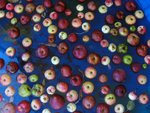
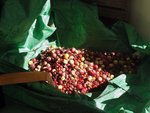
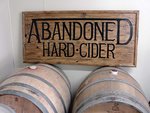
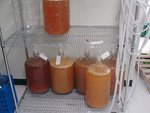
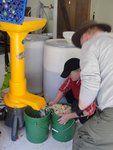
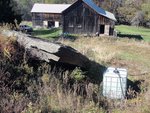
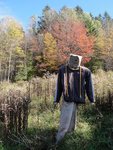
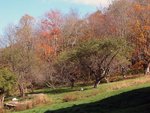
Abandoned Hard Cider’s first batch was brewed in a farmhouse basement four Septembers ago. It wasn’t necessarily a passion for apples that attracted co-founder Martin Bernstein to the endeavor, but a curiosity—and certainly a hunger—to utilize at least some of the autumnal abundance of his Catskills home. In the big hills of Willowemoc, fall rolls around and wild plenty explodes: blackberries slump on their canes, grape vines collapse under their own weight; and the apples hanging rosy-cheeked on every other tree break branches, stooping to the ground. Grinding his first carboy of juice on a homemade mill and press (a contraption made with a fan motor, a car jack and old barn wood), it was these feral apples from abandoned orchards that made Bernstein’s product taste so good and began the search for that special Catskills terroir that drives all of Abandoned’s appley dreams.
This dedication to local apples, and to the land from which they come, is apparent throughout all of the hard-cider company’s designs. Walk Bernstein’s orchard and you’ll see a wild, forward-looking farm adoring of its own history: a cluster of heirloom apple trees, planted some 100 years ago by the property’s original owners, mingle with new, hand-grafted oddities yet to bear fruit. The whole scene is set on 110 acres of classic Willowemoc land—rich, fertile, loamy soil on a precipitous green hill. Ascend the overgrown path to the property’s ridgeline and a regiment of wild-collected saplings punctuate the view. The old hemlock barn, which predates the cute-as-a-button 105-year-old farmhouse, is HQ for Abandoned and houses fermentation tanks, barrels and carbonation equipment. It’s here that head fermentor and co-founder Eric Childs tinkers and sips, adjusting their apples’ alcoholic manifestation to perfection.
That tinkering is important, especially when it comes to bringing out the best of the region’s wild-grown fruit. Abandoned is building its brand on the quality of its apples—foraged from some of the most remote areas in the Catskills, from ancient trees of mysterious heritage. Small and gnarly though the apples are, it’s what’s inside that counts: a good cider apple is sharp and tannin-rich, just like these feral beauties. Harvesting takes place beginning in September, when crab apples start to ripen. Clambering up contorted old trees, Child and Bernstein find harvests as diverse as a painter’s pallet: some fruits are golden, others almost buff, some are glossy and crimson, or pink or yellow or palest green. A whole variety of textures and tastes are apparent too, and it’s these variations that make Abandoned’s cider so nuanced and so interesting.
Perhaps even more interesting is the novel method the two apple aficionados are pursuing to get access to more of the state’s wild harvest: the pair are trying out a deal where landowners with apple trees can trade their backyard crop in for refined Abandoned product. Bernstein and Childs already have dozens of tree-owners participating across the region and are always looking for more. Their partner orchards range from the pristine (rows of pruned cultivars neatly sited in a manicured Hurley field) to the unruly (50 forgotten wildlings hidden in an overgrown red maple forest in Parksville). Even just a handful of trees can yield the mysterious and divine when it comes to cider: last year Bernstein and Childs came across some trees in Roxbury that were so good they made a cider exclusively from that crop. The product was delicate, light, crisp, tart, not at all sweet and absolutely dance-on-your-tongue delicious.
Bernstein has bumped into other cider makers while harvesting apples in the Catskills and Hudson Valley, which he describes as the “Napa Valley of apple trees.” Here the big guys mix with the little: for instance, there’s the Angry Orchard Walden team, from the Boston Beer Company-owned cidery, the largest American hard-cider producer in the country. Most of Angry Orchard’s cider is made from concentrate, but small batches made in Walden are carefully crafted with real passion (and real cider apples). The two companies met while both on the hunt for GoldRush apples at the Cornell research orchard in Highland.
The guys also befriended Metalhouse Cider, based in Esopus, at an abandoned orchard in Sundown. Metalhouse was interested in the tart crabapples, and Abandoned’s team was harvesting a variety of unknown cider apples. Metalhouse makes champagne-style ciders aged for a year or more. BadSeed, another regional cidery based in New Paltz, makes a dry cider using just one variety of apple—Empire—all grown in their own orchard. These are just a handful of the eclectic cideries based in New York, the number-one cider state in the nation.
Next up for Abandoned is making it through 2018’s apple harvest, a time of year that sees Childs and Bernstein slogging through still-hot weather, shouldering bulging sacks of fruit. The two hope to add a few new things into the mix including a limited run of hopped cider made from hops grown at the cidery in Willowemoc. Wild raspberries and blueberries may make it into some of the mixes as well.
It will all be debuting commercially in 2019, from a barrel-aged cider that has enjoyed a long and languorous fermentation in Chardonnay oak barrels to offerings in 16- and 12-ounce cans. You’ll be able to find it at any number of restaurants and shops across the Catskills, from Main Street Farm in Livingston Manor to Beer World in Liberty to Henning’s Local in Cochecton. Savor it knowing that you are tasting the transfiguration of the once unwanted into something “rich and strange.”
[Molly Marquand is the wife of Abandoned Hard Cider co-owner Martin Bernstein. She has a Master of Science in botany and has written for publications including Wilder Quarterly, Bon Appetit and National Geographic Online.]
Comments
No comments on this item Please log in to comment by clicking here